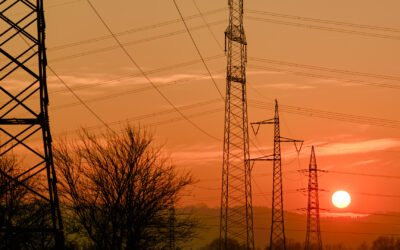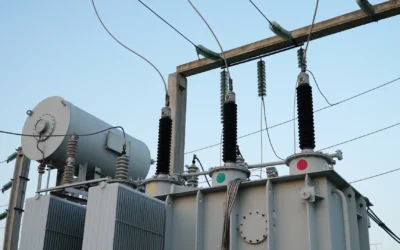Download Service Overview
- The EU and USA aim to decarbonize their building sectors to meet emission reduction targets. Initiatives like the Home Energy Rebate Program in the USA and the revised Energy Performance of Buildings Directive (EPBD) in the EU offer roadmaps for achieving net-zero emission building goals.
- The Home Energy Rebate and EPBD advocate for the widespread adoption of smart heating and cooling systems, decentralized energy generation, storage, and automated load control. These initiatives pave the way for significant potential in energy management solutions within the building sector.
- Despite the common vision towards decarbonization of the building sector, the USA will emerge as the leading market for energy management solutions including BEMS and HEMS due to the high proliferation of smart meters as compared to the EU.
Introduction
Sustainable building is an increasingly recurring theme across the USA and Europe in line with their zero-emission targets. Currently, buildings contribute significantly to greenhouse gas emissions, accounting for 33% in the USA and 36% in Europe. Both the Biden Infrastructure Law and the EU Fit for 55 packages prioritize reducing carbon emissions from buildings as a vital step toward achieving net-zero targets.
Recent progress in the NetZero emission building sector is notable in both the USA and Europe. These advancements involve various initiatives such as rebate programs and clear targets aimed at reducing emissions in buildings. Encouraging building owners to embrace smart building technologies like smart thermostats, HVAC systems, rooftop solar panels, EV chargers, and battery energy storage systems is a key focus.
In addition, efficient onsite energy management solutions play a vital role in curbing emissions in the building sector. These solutions fall into two main categories: home energy management solutions (HEMS) and building energy management solutions (BEMS).
HEMS focuses on optimizing energy usage in residential buildings through comprehensive energy reports and automated load control. On the other hand, BEMS targets energy optimization in commercial and industrial buildings. It achieves this by coordinating energy consumption across various smart devices such as thermostats, HVAC systems, rooftop solar panels, EV chargers, and battery storage units.
Regulations and Policies Landscape
USA:
In the USA, the White House Office of Domestic Climate Policy has shown clear intentions towards pacing up the decarbonization of the building sector, by initiating the process of standardizing the definition of zero-emission buildings. This involves the Department of Energy gathering information from research institutions, industry experts, and other key stakeholders in drafting Part 1 of the draft National Definition for Zero Emissions. Part 1 focuses on defining a consistent and measurable basis for buildings with zero operating emissions. The criteria for qualification include high energy efficiency, absence of on-site emissions from energy use, and reliance solely on clean energy sources.
In addition to defining standards, the Biden administration provides financial support through programs like the Home Energy Rebate Program. This program, with funding worth $8.8 million under the Inflation Reduction Act, offers rebates for energy-saving retrofits and high-efficiency electricity upgrades in homes. These initiatives aim to not only reduce energy bills but also significantly cut down GHG emissions.

Figure 1: Home Energy Rebate Program Investment Breakdown
Source: PTR Inc.
Europe Union:
The EU has strengthened the Energy Performance of Buildings Directive (EPBD) with a recent revision aimed at accelerating the decarbonization of buildings across member nations. The directive mandates that all new residential and non-residential buildings must have zero on-site emissions from fossil fuels by January 1, 2028, for publicly owned buildings and by January 1, 2030, for all other new buildings. Additionally, new buildings will be required to be solar-ready, and existing public and non-residential buildings must install solar rooftop panels in stages starting in 2027.
The revised directive sets targets for residential buildings to reduce average primary energy use by 16% by 2030 and by 20-22% by 2035. For commercial buildings, minimum energy performance standards will be gradually increased. This will involve renovating 16% of the worst-performing buildings by 2030 and 26% of the worst-performing buildings by 2033. The directive also mandates the gradual phase-out of boilers powered by fossil fuels, with subsidies for standalone fossil fuel boilers prohibited as of January 1, 2025. The aim is to fully phase out fossil fuels in heating and cooling, including boilers, by 2040.
To achieve these targets, the EU requires member nations to implement National Building Renovation Plans, provide funding, and train the workforce to achieve decarbonization in the building sector.
Looking Forward
The shared commitment of the US and EU administrations to decarbonize the building sector underscores their dedication to energy reduction goals. Policies such as Home Energy Rebate and EPBD advocate for the widespread adoption of smart heating and cooling systems, decentralized energy generation, storage, and automated load control. These initiatives pave the way for significant potential in energy management solutions including BEMS and HEMS within the building sector. Despite shared goals, differences in smart meters infrastructure and rollout strategies highlight the divergent paths towards achieving energy efficiency in the building sector between the US and EU. The USA is poised to become the key global market due to its widespread smart meter adoption, nearing 80% and projected to reach 100% before 2030. Smart meters enable efficient control of smart electric appliances and distributed generation behind the meter. This positions the USA as a pivotal market for these services. In contrast, the EU faces challenges in smart meter rollouts, with countries like Belgium, Croatia, Poland, Slovakia, Lithuania, and Hungary lagging. This shortfall directly impacts HEMS and BEMS adoption, resulting in slower growth compared to the USA.
Smart Building Energy Management Global Market Analysis Overview
Contact Sales:
Europe
+49-89-12250950
Americas
+1 408-604-0522
Japan
+81-80-7808-1378
GCC/Rest of APAC
+971-58-1602441
More about our:
Research Services
Recent Insights
US Elections: Consequences of a Second Trump Presidency for Energy Sector
The US is making strides to move away from fossil fuels and eventually decarbonize the energy sector. The White House aims to achieve 80% renewable...
US Power Transformer Market Snapshot
US Power Transformer Market SnapshotMarket OverviewUSA to expand transmission systems by 60% by 2030 and may need to triple those systems by...
Sustainability Across Sectors: Highlights from GreenTech Festival 2024
Recently, I had the privilege to attend and present at the Greentech Festival, an excellent event in the realm of sustainability. This influential...


